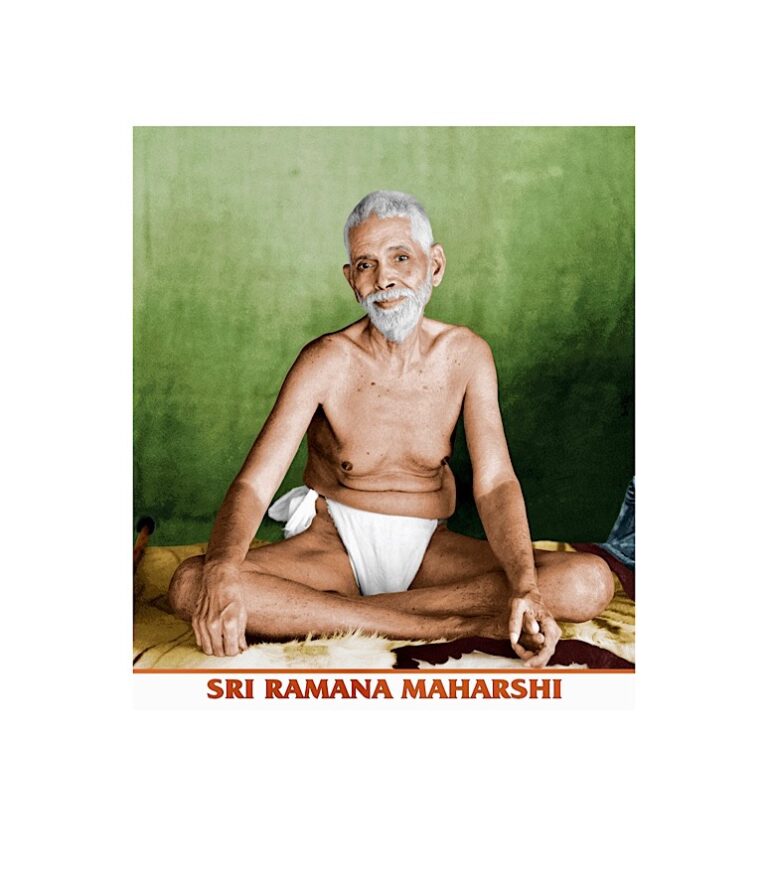In India, there are temple towns, there are mountain towns and there are temple-mountain towns. The city of Tiruvannamalai (let’s call it Tiru for short), which lies about 200 km south-west of Chennai, is in the third category. It is deemed the place where God in his Shiva incarnation appears in one of his five elements, namely fire.
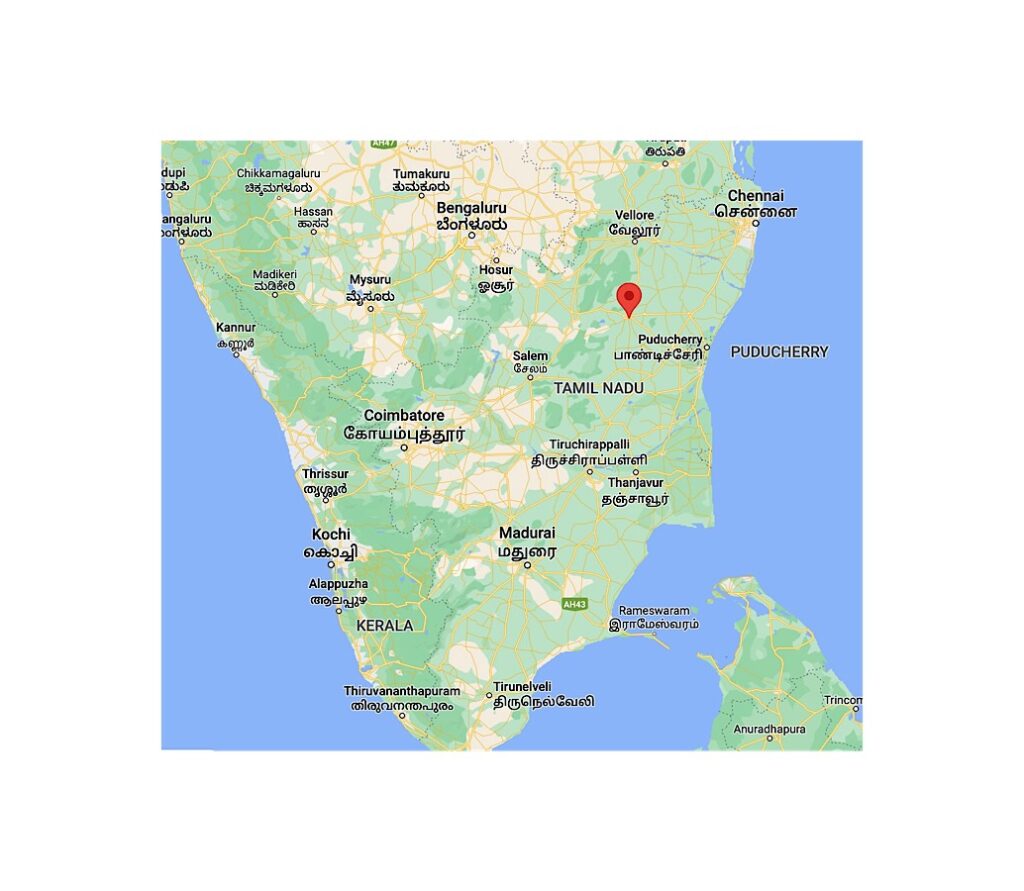
In “Tiru”, the Arunachaleshwar temple is one of India’s largest, occupying 10 hectares within four high walls. Its construction started in the 9th century and continued through to the 17th century. One of its four entrance gates (called here gopuram) is an astonishing 66 meters high. It also has a large free large room, called a mandapam, which houses 1,000 sculpted granite columns, which were offered to the temple, in the 14th century, by the last great King who ruled all over southern India. Another example of a monumental undertaking of that period.
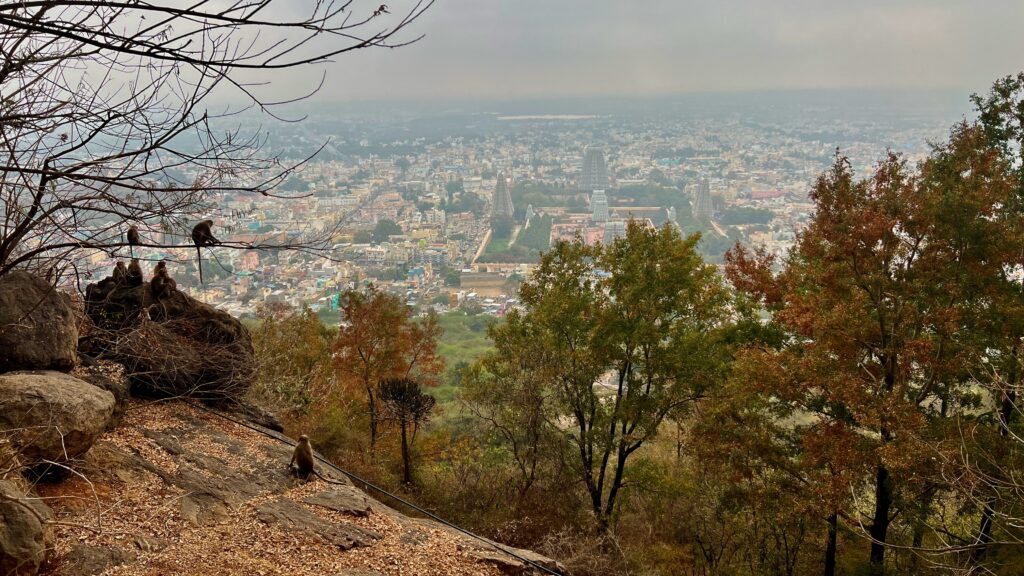
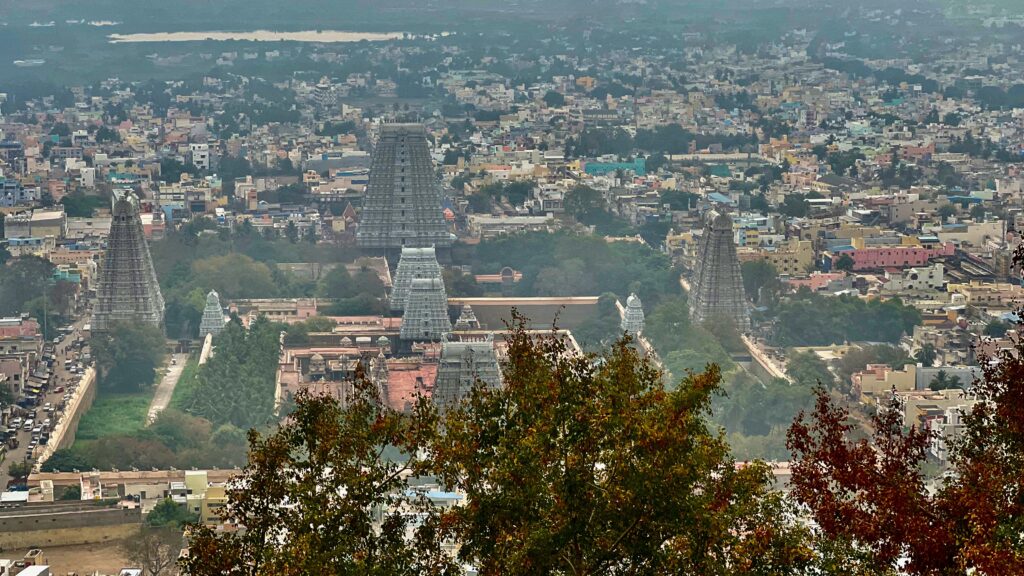
The temple is set below boulder strewn Mt Arunachala, which has always been considered by the Hindus as a sacred mountain.
At every full moon, the city swells with thousands of pilgrims who walk around the mountain base, in a purifying ritual. A crowd of devotees, priests, sadhus (spiritual men in saffron robes who have renounced material possession and devote their lives to spiritual pursuits) walk the 14 km under the full moon. A sight to be seen.
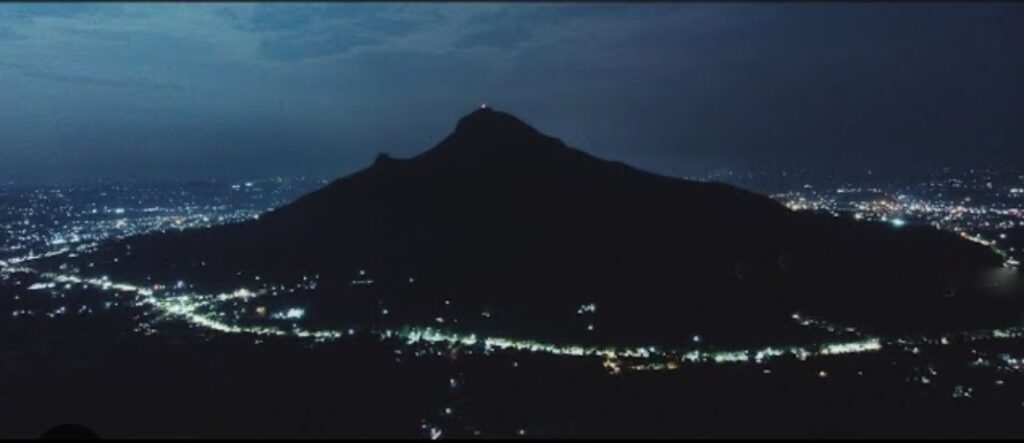
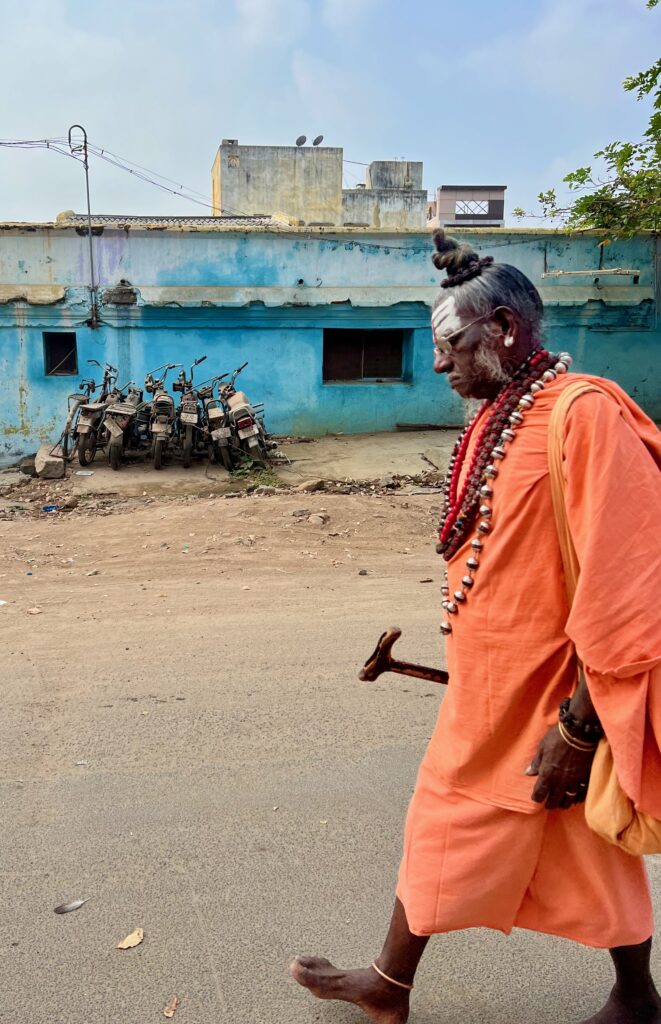
But I really came to “Tiru” to visit the Sri Ramana Maharishi ashram, an exceptional place. Sri Ramana Maharishi was a revered Indian sage and liberated soul, who lived in the first half of the 20th century. Ramana was born in 1879 in a small village and attained enlightenment at the age of 16, after experiencing a profound spiritual awakening. After this experience, he left his home and wandered to the holy mountain of Arunachala, where he spent the rest of his life in deep contemplation and meditation.
He started by living in the temple grounds, completely destitute. After a year, the young man inadvertently drew attention to himself, not because he said anything (he never spoke, so deeply lost in meditation was he) but because people became fascinated by him. To find more solitude, he then inhabited a makeshift hut, quite a distance from the temple. After a few months, people caught up with him, so he took refuge in a cave halfway up the mountain. There he lived like a hermit, for several years, still not proffering a single word.
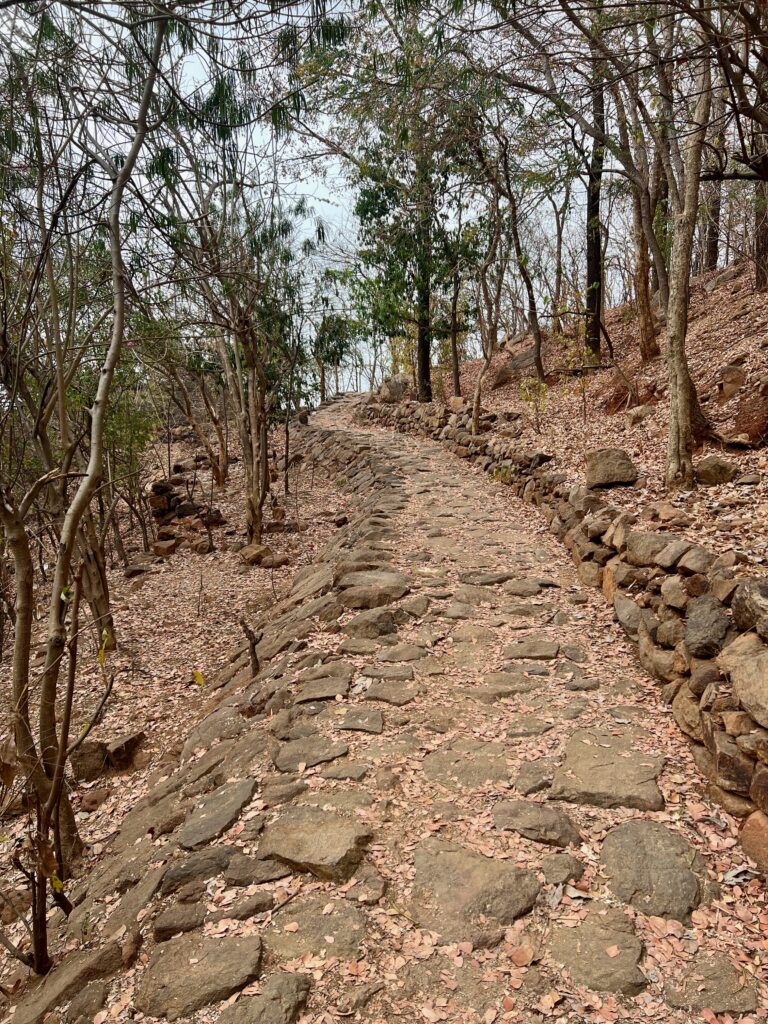
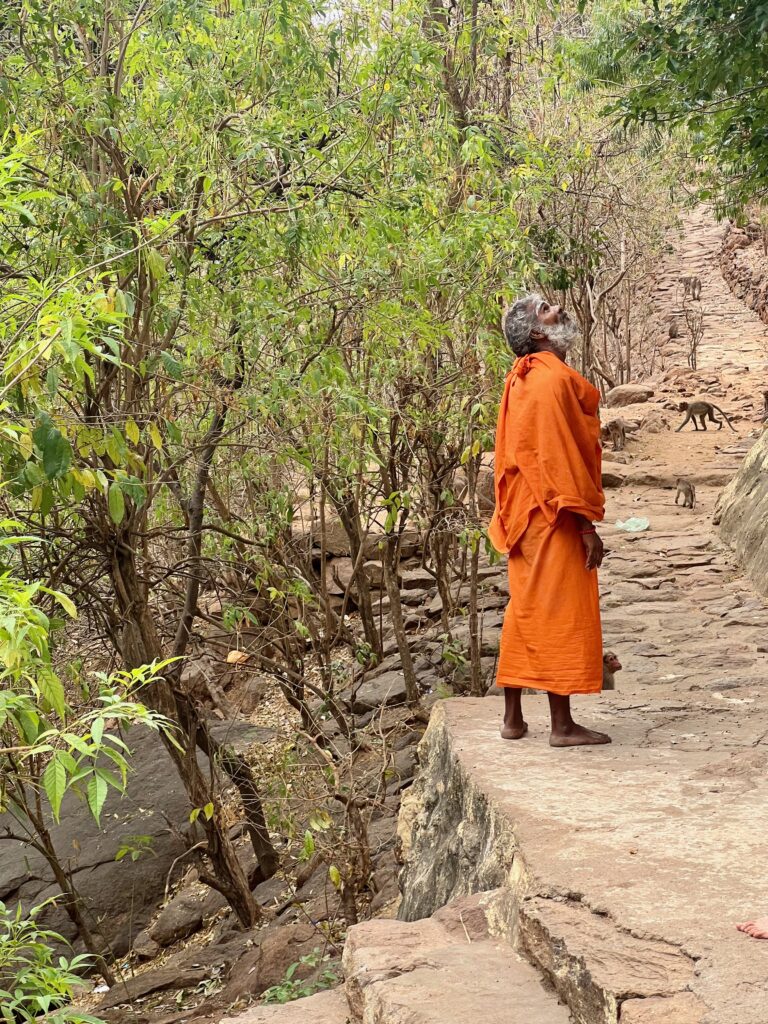
He stayed in his cavern for about 6 years, before eventually agreeing to come down to the foot of the mountain where an ashram was being built. By this time, he had attained enlightenment and had started talking again. Though he was a taciturn man, who smiled much and generally said little.
He lived in the ashram for the rest of his life (he died in 1950).
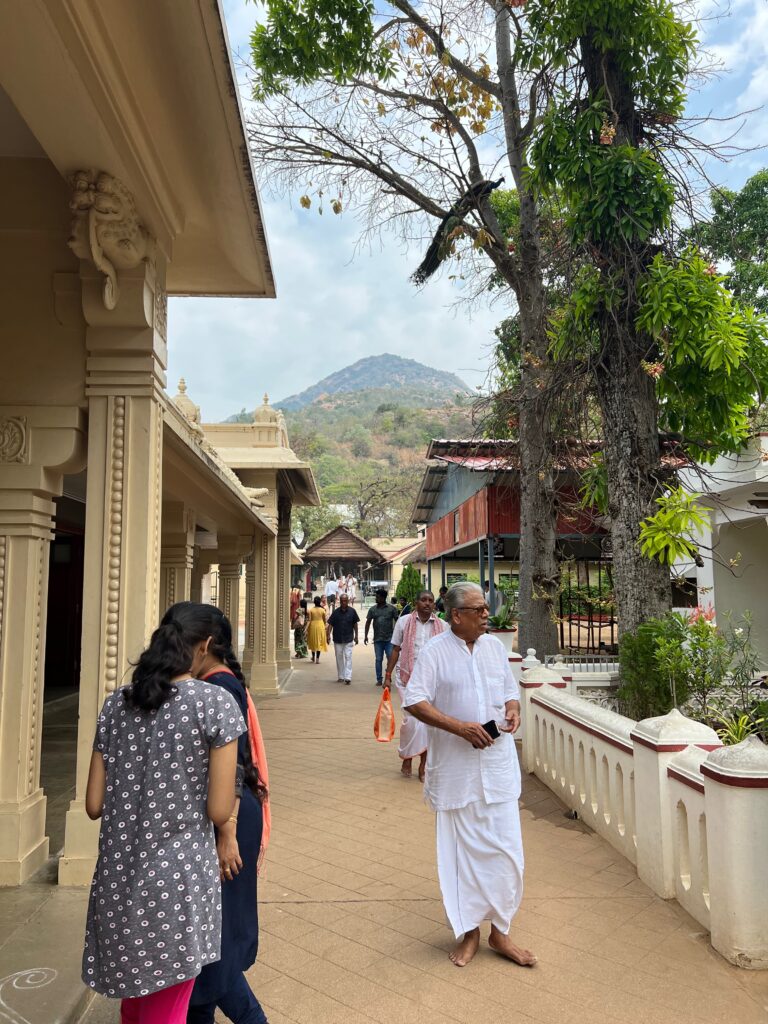
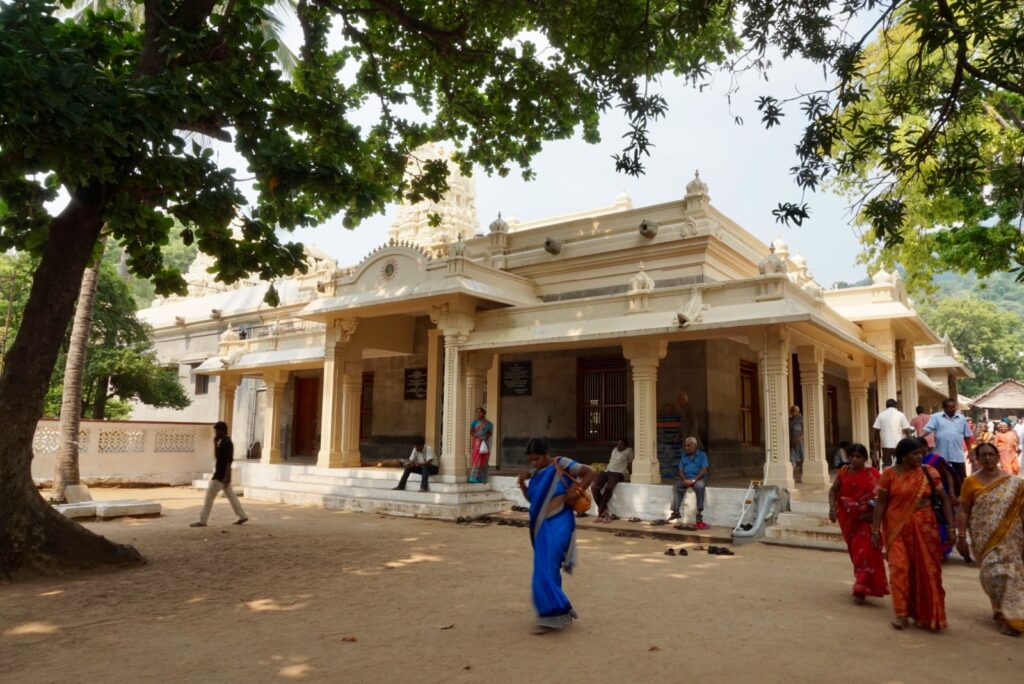
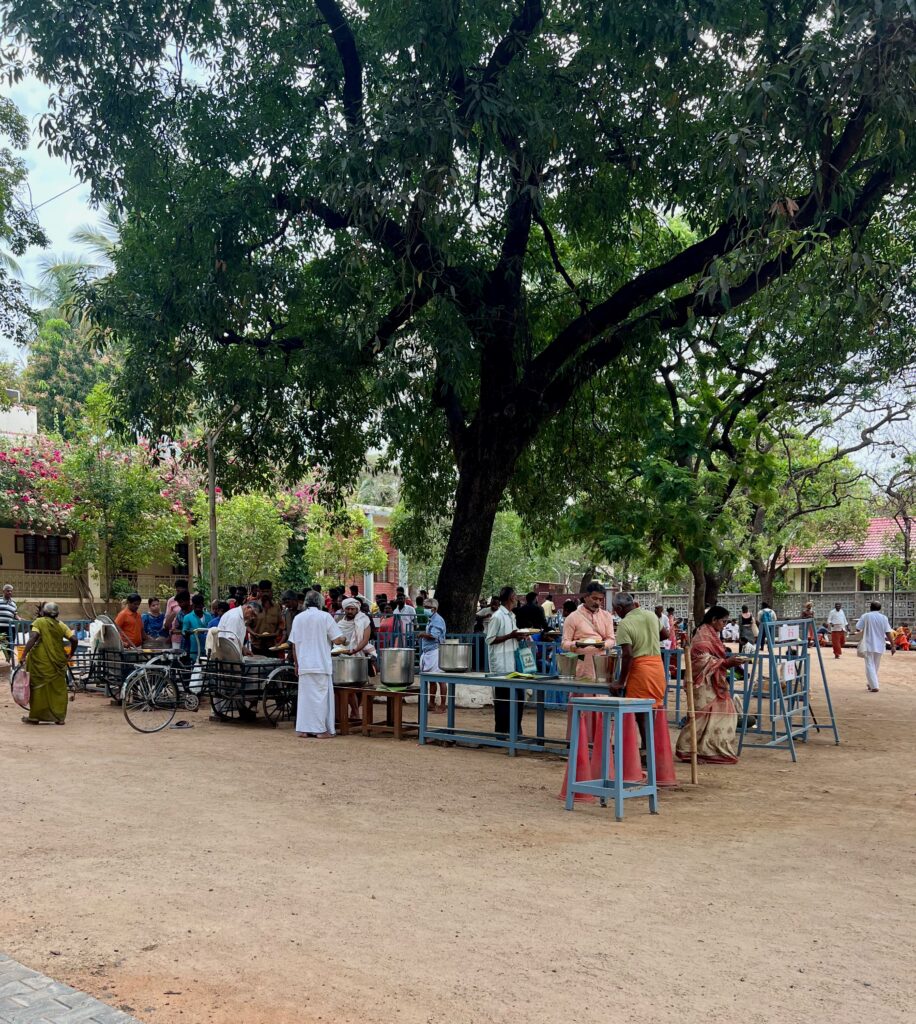
He was visited by many people, who sought his advice to their problems, quests and what not. The Maharishi (which means Great sage or Seer) very often did not respond to the ceaseless questions put to him, often preferring to say nothing, just sitting still. After a while, the questions would die down, peace and silence would come back to the hall. Some remarked it was as if he were communicating his quiescence telepathically to the audience. At other times he would talk, but always with restraint and great concision.
For the Maharishi, the question was not “To Be or Not To Be”, but rather “Who Am I ?”. A far more loaded question, that one might never be able to really answer. But for the Maharishi, if one wants to escape from the tyrannical clutches of the mind, from that perennial cartesian duality between body and mind, the only way is to keep asking oneself “Who Am I”, with the emphasis on the I.
To all those looking to overcome the conflicts, guilt, or fears that one is
confronted with at one time or another in one’s life, the Maharishi would keep repeating the same thing. One needs to keep coming back to the question “Who Am I” time and time again, to identify where the I comes from deep inside oneself. The answer eventually will emerge as one reaches a state of quiescence, to the point where the duality first diminishes and then dissipates into pure awareness. Oneness.
Not the type of question the hardcore rational and materialistic mind is willing to contemplate, as he considers that it is all about just getting on with things and sticking to the script of linear thinking. Well, in India, ancestral wisdom prevails. It allows both rational thinking and spiritual awareness to cohabitate alongside each other. Many consider this to be the sign of an heightened civilisation, where the spiritual resides alongside the rational, and neither claiming sovereignty over the other. He believed that the true nature of the self is pure consciousness and that the ego, or the sense of individual identity, is an illusion that obscures this true nature.
During his lifetime, Ramana Maharishi attracted a large following of devotees, both in India and around the world. His teachings have continued to inspire many people, and his ashram, in Tiruvanamalai, remains a popular destination for spiritual seekers.
The ashram is run today in the same spirit as that favoured by the yogi in his time. Everyone is welcome to stay as long as they want. No questions asked or money demanded, unless you rent a room or take a communal meal. Free meals are offered daily to the poor and needy, of which many sadhus (a few thousands of them live outdoors, on the road that circumvents the spiritual mountain)
There are also many westerners who visit the ashram, some for a few days, others for a few months. All ages, gender, and conditions. All on some quest or other. Except for the ceremonial chants, the halls, and temples remain silent. Everyone sits on the floor, on a little mat or cushion.
Clearly, Ramana Maharishi is one of the most revered sages of modern India, and his teachings have had a profound impact on the spiritual landscape of the country and beyond.
The ashram is a special place where, after a few days, my mind too started to quieten down and settle into a contemplative mood. Maybe we should have such welcoming and free places in our big cities, to just still the mind for an hour or so. Often beats seeing a therapist …
PS If you are interested in finding out more, I recommend a fine book by Paul Brunton entitled “A Search in Secret India”.
PB (as he was nicknamed) travelled all over India in the early 1930s, looking to meet yogis, mystics and gurus, seeking the one who would give him peace and tranquillity that comes with self-knowledge. His vividly told story ends when he meets Sri Ramana Maharishi, with whom he sojourned for many months, before sailing back to England.

